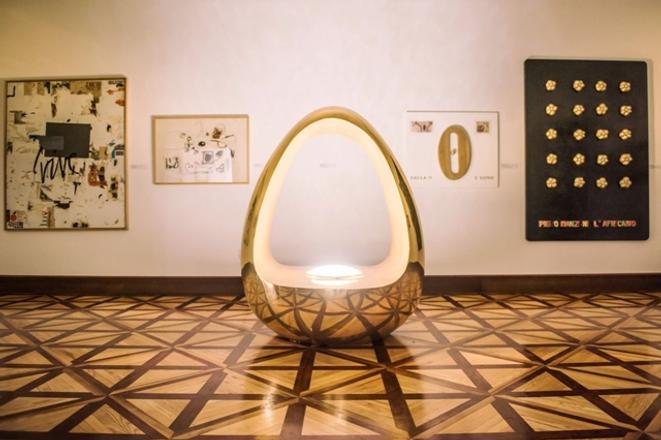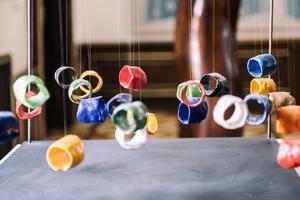More than a hundred artworks by 98 artists show – within one of the widest artistic events – the development of modern art in the Italian peninsula in a varied range of genres and various artistic movements.
The curator Laura Monaldi who took part in-person at the opening in June outlined in her speech this development, putting special stress on the Italian impact on Slovak artists which showed extraordinarily mainly after the fall of the Iron Curtain when they could finally directly experience the artwork and meet the artists in person.
Monaldi started her short lecture with the post-war period when World War II destroyed and severed artistic evolution and artists tried to re-discover its core – what is clean and new in it. She also touched on the following period of searching, renewing communication, the Fluxus movement in the 1960s and 1970s, stress on human relations in the 1970s, avant-garde, collages and Visual Poetry of 1970s and 1980s, Arte Povera / The Poor Art, turning to the future, pop art, Radical Architecture, searching for new techniques and forms, Trans-avant-garde of 1980s and 1990s, Graffitism, and other movements and trends.
First-hand experience is better
With visual art, it is better to see once with one’s eyes than to hear a thousand times, Slovaks say, and thus, the paintings, statues, installations, collages, graphic artworks, architectonic models, sketches, photographs and other works on the 2nd floor of the Pálffy Palace of the Bratislava City Gallery (GMB) testify best to the Italian art of the 20th century. They attract mostly with wit, humour, inventiveness and progressiveness. Moreover, many of them have a rich, intriguing history or have become a legend in their homeland for various reasons.
The exhibition is a selection of a private collection of Carlo Palli in Prato which contains a total of 30,000 artworks, documents and period materials, put together gradually. His archives have cooperated in hundreds of exhibitions in Italy and abroad over the course of the years.
When asked about the key for selecting just a handful from thousands of works, curator Monaldi answered that they chose artists and their artefacts to jointly offer a complex image of the art of their country and its progress in recent decades.
The Viva Italia! exhibition can be seen in the Pálffy Palace in Panská 19 in Bratislava daily except for Mondays until October 2.



 The big room of Viva Italia! in GMB (source: Rudolf Baranovič (of Italian Cultural Institute))
The big room of Viva Italia! in GMB (source: Rudolf Baranovič (of Italian Cultural Institute))


